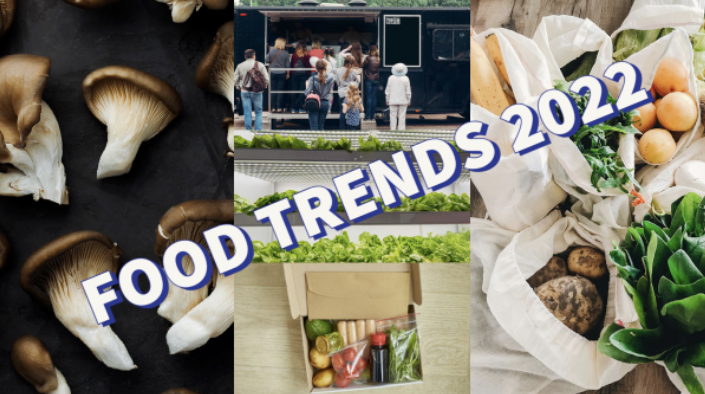Food Service Brokers, Marvell Foods Shares Food Industry Trends & Insights, 2022
As foodservice brokers, Marvell Foods has frontline experience and insight into the food service industry and how it evolves yearly. As we consider the top foodservice trends for 2022 and beyond, we’re noticing changes and trends in food hospitality, marketing, labor, and products that are not only exciting unto themselves, but more particularly as the industry, business, and the country, emerge, rebound and evolves in the post-Covid Pandemic world.
Below, we’ll share these observations that food brokers and other food service industry providers – from retailers/restaurants, manufacturers, suppliers, and others who “touch food” in one way or another might want to consider adopting and modifying their business practices to remain competitive in an increasingly challenging business and food-related environment.
What Food Industry Trends are Emerging in 2022 and Beyond?
Whether or not you’re keeping your finger on the pulse of what’s changing, you can be sure your competition is. Everyone involved in food service, from food service brokers and food liquidation companies to grocery retailers and restaurant owners, must stay on top of trends. Success (or failure) during these challenging and volatile times requires an ability to adapt to industry disruptions.
Trends to Watch in a Post-Pandemic World
-
Sustainability

There is a massive shift to ward sustainability in food production, packaging, and retail, with food service brands making environmental concerns a cornerstone of their business instead of just an afterthought. The onus is on everyone along the entire food production and supply continuum, from manufacturing to end consumer delivery and to work toward a greener future. This trend will only become more popular (and expected), so make sustainable switches now to meet the needs and demands of the burgeoning Millennial and Gen Z audiences, who are the increasingly larger consumer base for virtually all goods. Appreciate and abide by this fact not just because consumers increasingly demand it (which is the case), but more so it is the right thing to do for the environment AND the planet. Ignore this at your business’s peril.
-
Loyalty Programs
As many consumers remain reluctant and skittish about venturing out to public venues, from retail restaurants to large entertainment entities (that serve food,) the more critical it becomes to offer something unique to attract people. One way to achieve this is with loyalty programs that provide rewards to facilitate more frequent business visits. These programs help strengthen brand loyalty, a practice consumers have grown accustomed to, a common practice in a wide range of consumer goods, especially clothing and travel. Adopting programs like these can make a noticeable difference in the bottom line, keeping customers engaged and returning to redeem rewards.
-
Ghost Kitchens, Carry-Out, and Virtual Brands
Ghost kitchens and other carry-out-centric spots reduce overhead costs and appeal to the widening percentage of the population that wants restaurant-quality food without the in-person restaurant experience. The same goes for virtual brands offering cool new food concepts with a solely online presence. These are ways to expand an existing business, though they’re also accessible entry points if you’re starting from scratch.
-
Focus on Work Culture

From small restaurants to massive food closeout liquidators, the pandemic showed food service providers that they must prioritize their employees to see continued success. This requires a commitment to improved work culture and everything that goes with it, including better manager-employee communications and more effort toward work-life balance for all staff members.
-
Technological Improvements
QR code menus, robotic ordering systems, and checkout-less purchasing are just the tip of the iceberg regarding new technology in food service. This year and in the coming years, expect to see technological improvements in all facets of the industry, with new tools that help businesses run more efficiently and help provide consumers with an all-around better experience. Technology advances provide holistic enhancements to retail operators as well as consumers. Tablets replacing “handheld paper menus” is not necessarily groundbreaking; it became increasingly important during Covid, as did the use of QR codes that “limited” finger-touching and virus transmission. Customers are now more familiar and acquainted with cell phone-oriented technologies.
How Food Salvage Companies Can Help Put These Trends Into Action
Foodservice brokers, including salvage food distributors, must remain ahead of the game if they’re going to provide clients with the best service possible. This includes tapping into top industry trends and using them to guide buyers and sellers on how to succeed in the current climate.
Marvell Foods – Your Go-To Source for Surplus, Salvage, Seconds, Spot, and Opportunity Buys
A third-generation, privately-owned company with more than three decades in the food industry, Marvell Foods remains on the cutting edge to provide superior service to its national clients and continually expanding customer base of manufacturers, processors, co-packers, suppliers, distributors, and retailers, and is the nation’s leader in seconds, surplus, salvage, excess inventory, spot and opportunity buys specializing in short-code and expired food goods and other products.

